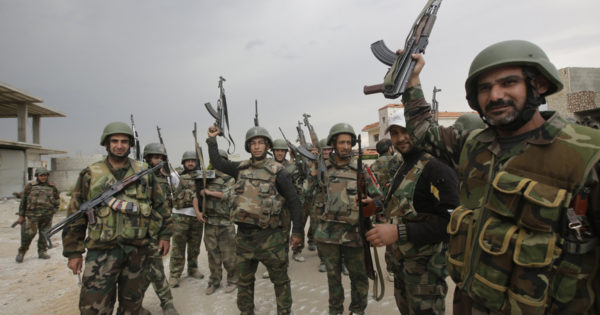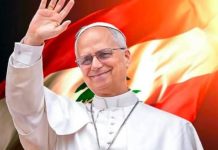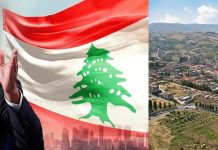Hezbollah military parade in Qusayr raises eyebrows
Joseph A. Kechichian/Gulf News/November 16, 2016
Riyadh: Although the Lebanese Armed Forces (LAF) issued a formal denial on Tuesday that the vehicles that appeared in a Hezbollah military parade in Qusayr (Syria) were never part of the LAF’s arsenal, the United States announced that it had launched an investigation to determine how the party acquired US-made tanks and armoured vehicles.
For its part, the Future Movement condemned the parade, describing it as a “threatening message” addressed to the Lebanese, in particular to the newly-elected head of state, asserting that Hezbollah placed “Iran’s interest before the national interest”.
Several media outlets published photographs of thousands of militiamen in numerous military vehicles. Though the LAF insisted that the armed personnel carriers (APCs) “were not taken from the army’s arsenal”, any such transfers would be a violation of US law. Washington is the largest donor of military equipment to the LAF though one of the provisions of all such donations is that nothing can be handed over to third parties, especially a militia that the US Department of State has identified as “a foreign terrorist organisation”.
The photographs showed M113 APCs, M198 howitzer guns, and heavy-calibre machine guns, all of which exist in the LAF inventories, though the origins of these specific items could also be the now defunct South Lebanon Army (the so-called Lahd Army that was established during the 1975-1990 civil war), which was equipped by Israel. In 2000, Hezbollah seized various SLA items as most of the units fled when the Israeli army withdrew from South Lebanon, leaving a trove of materials behind.
It will be up to American investigators to determine whether these vehicles originated in Israel or whether thy may have originated in Iran, which counted numerous such items from the time of the Shah’s regime.
In addition to this display of military might, it was unclear what the political message of the parade was, or could be.
To be sure, November 11 marked Hezbollah’s “Martyr Day”, although this was the very first time when such a display occurred to commemorate the anniversary. That is what prompted many to wonder whether Hezbollah, which backed President Michel Aoun and reluctantly accepted Prime Minister Sa‘ad Hariri as the next head of the government, intended to telegraph specific views to Lebanese elites at the beginning of the new presidential tenure.
President Aoun stressed in his oath of office his intention to “restore the State’s role, presence and prestige”, all of which were challenged by this parade as Hezbollah was reluctant to submit its will to that of Beirut. For their part, political parties were engaged in fierce competition regarding the formation of the next Cabinet that, presumably, would be empowered to address a host of security-related concerns, including Hezbollah’s involvement in the Syrian civil war.
Aoun was anxious to persuade Saudi Arabia to reallocate the $3 billion grant to the LAF — which was suspended after Foreign Minister Jibran Bassil criticised Riyadh in the aftermath of Iranian attacks on Saudi diplomatic posts in Tehran and Mashhad — while the Italian Ambassador to Lebanon Massimo Marotti announced that his country would provide the LAF with equipment and ammunition worth €3.5 million.





















